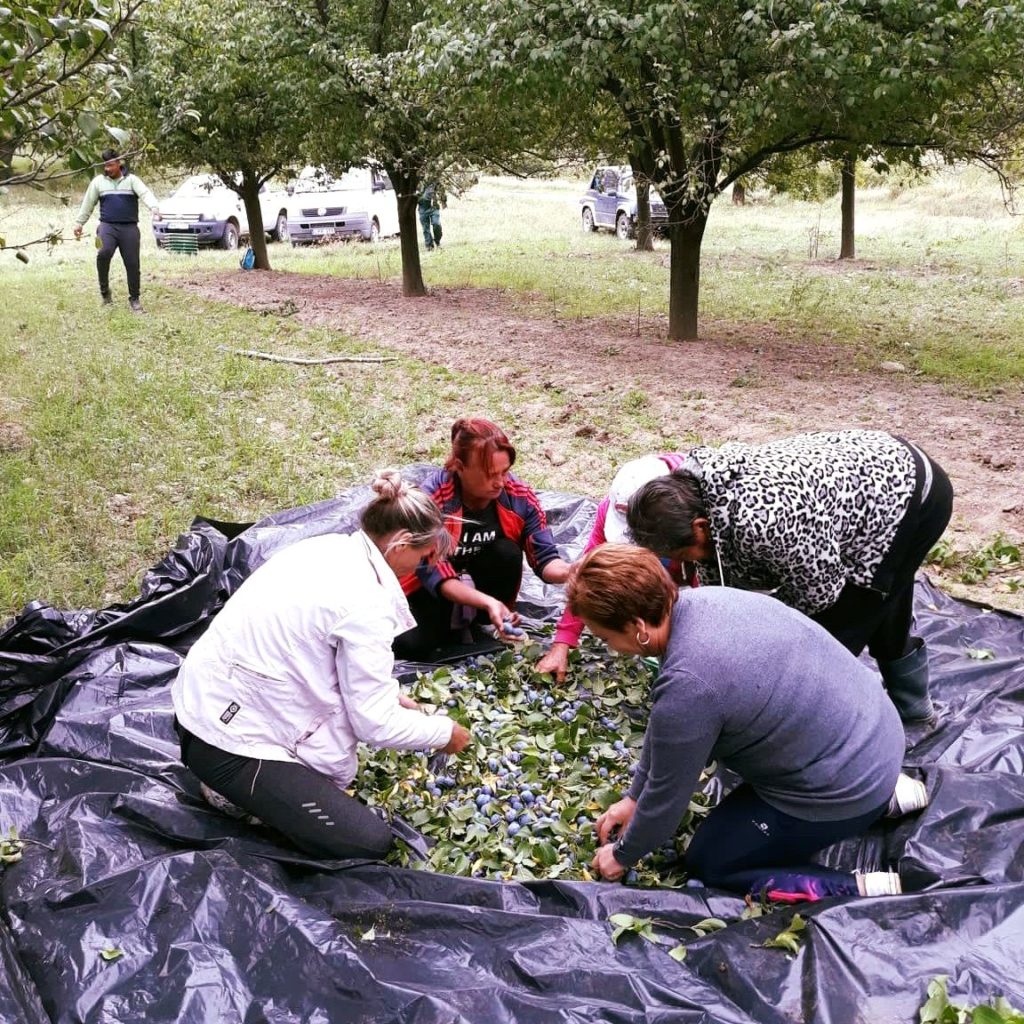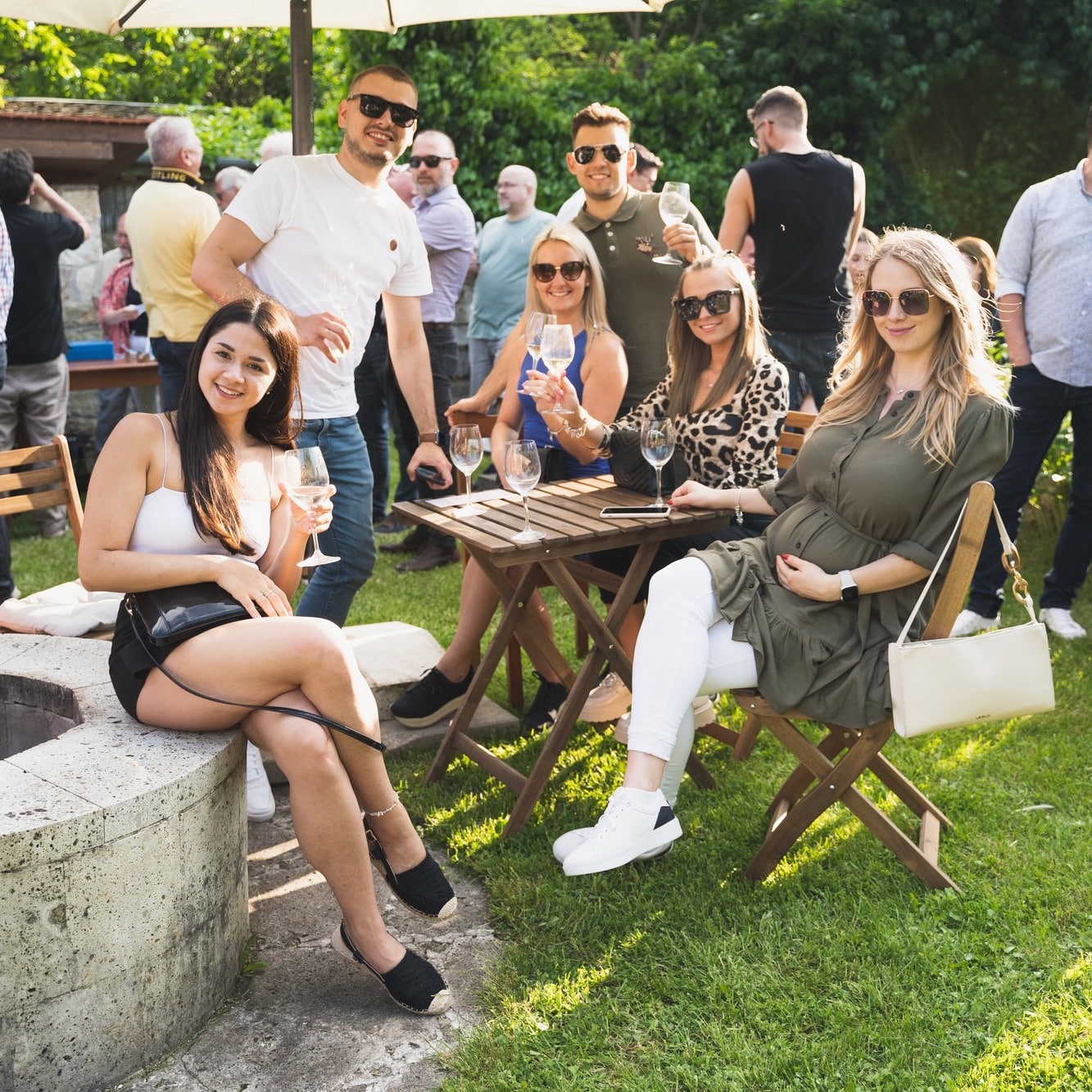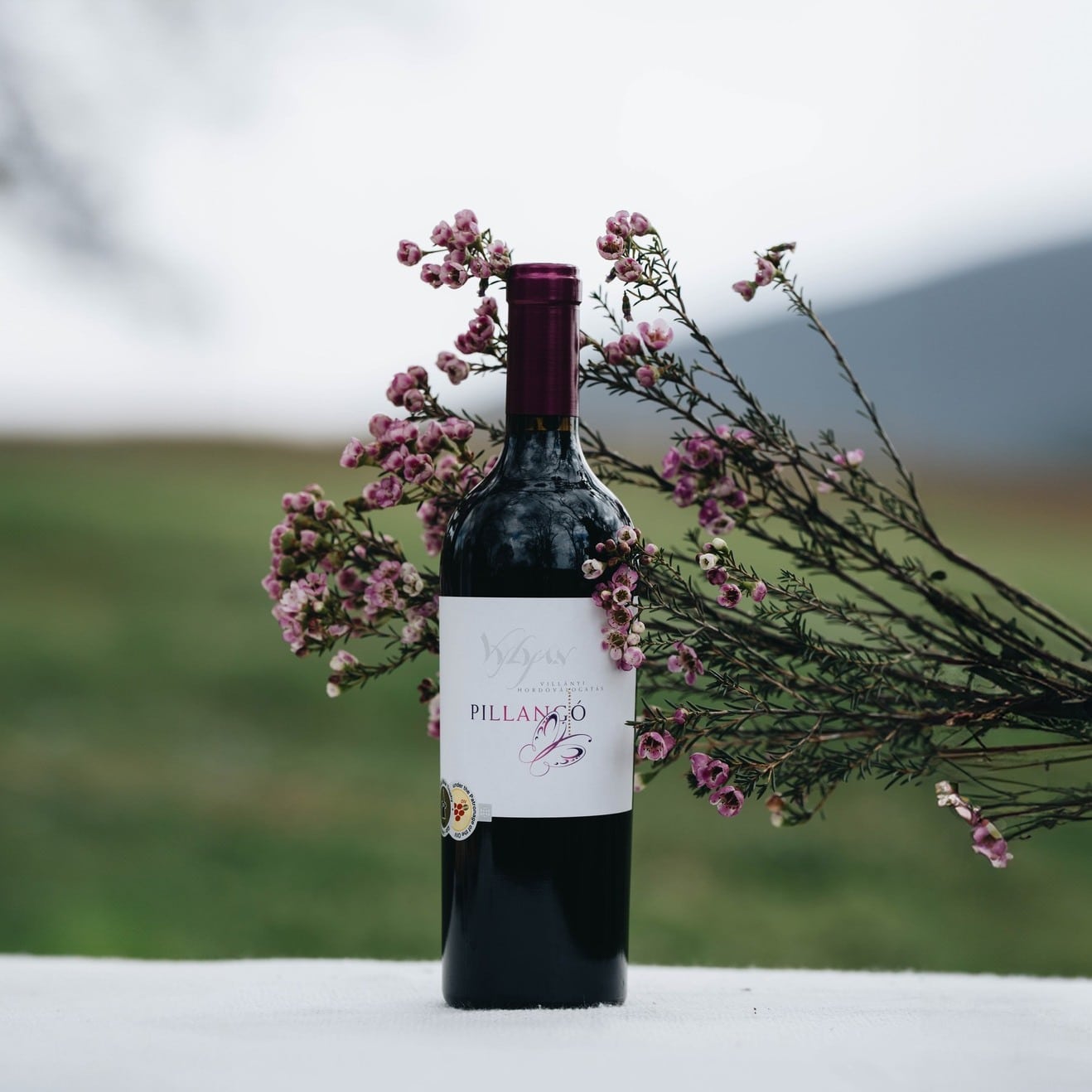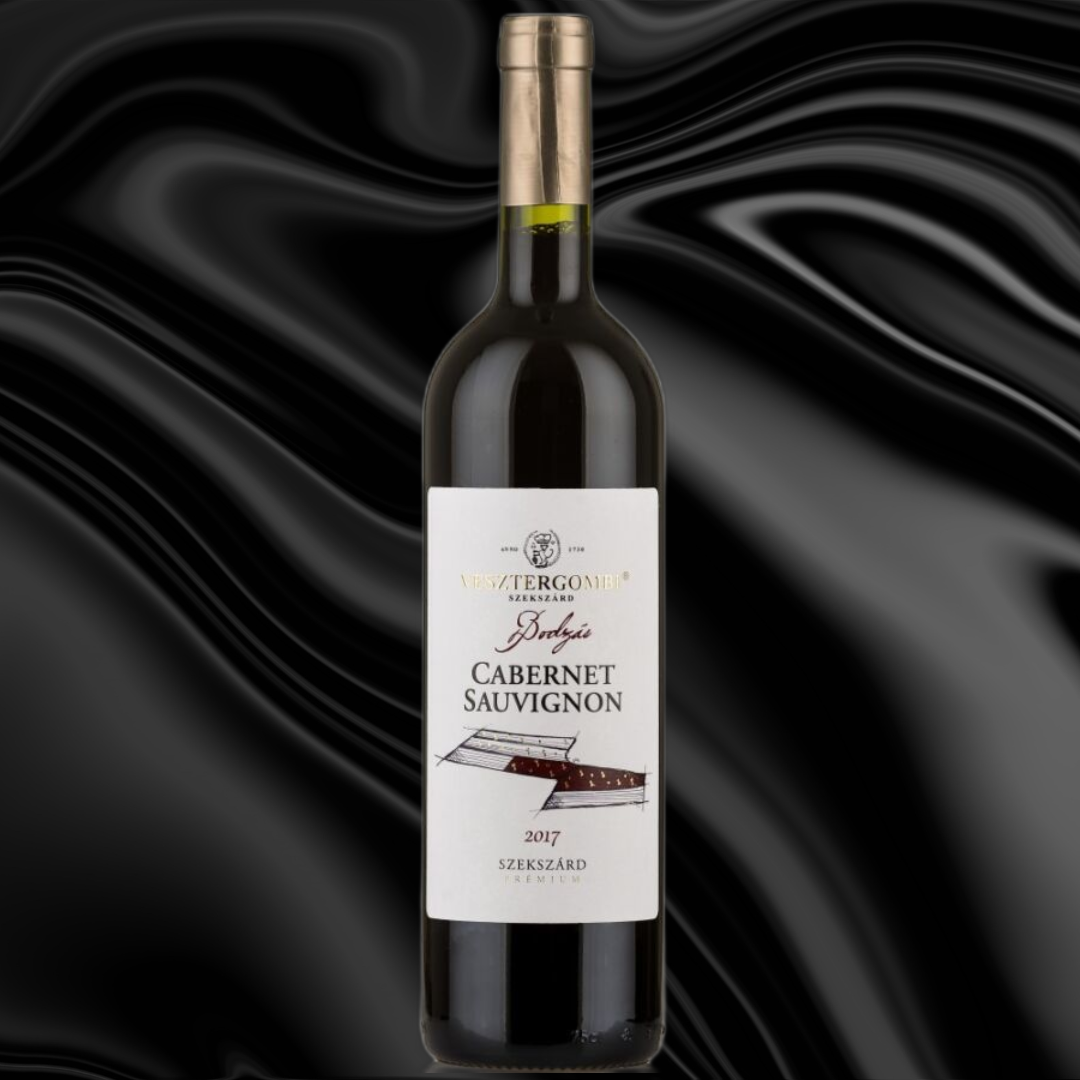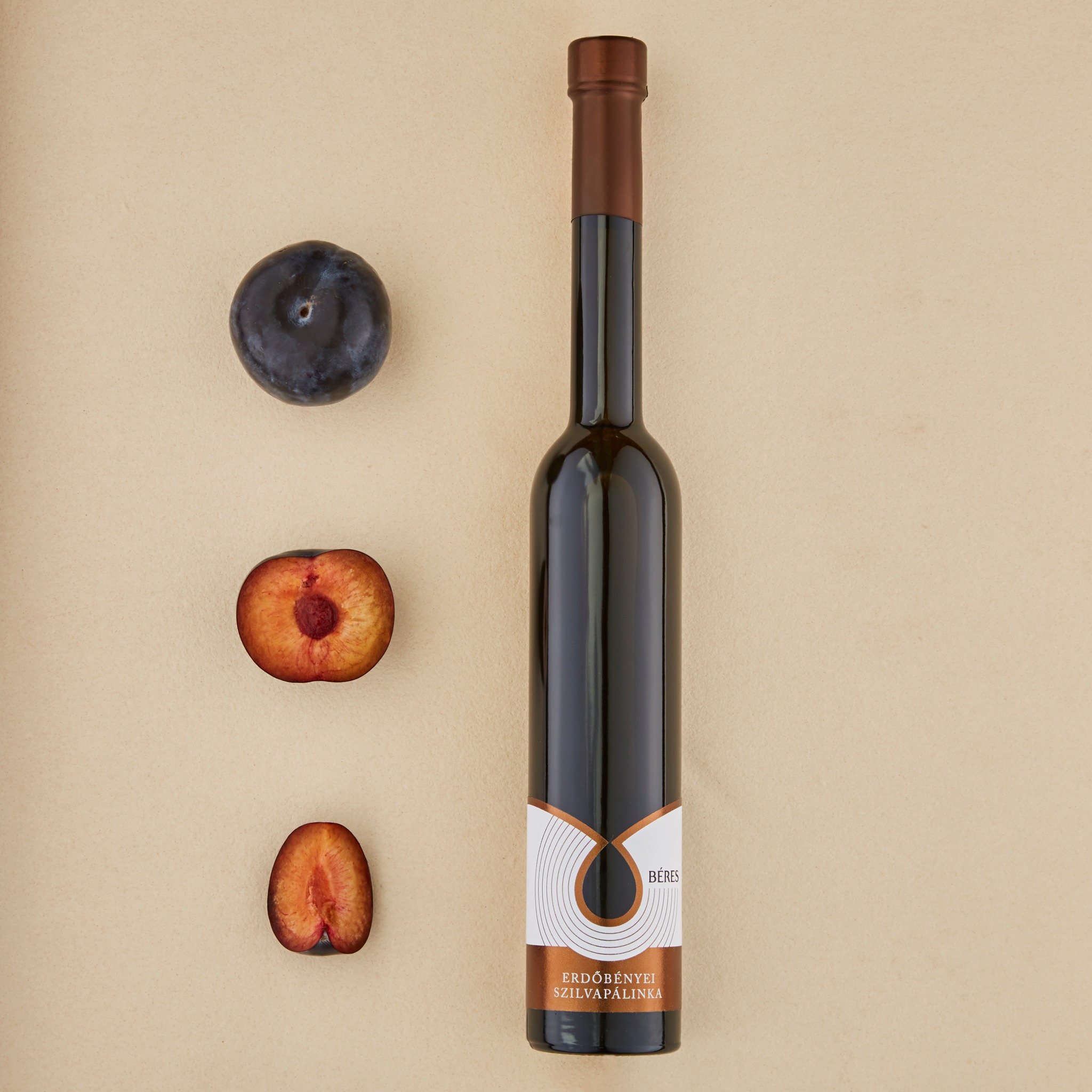
Béres Plum ‘Pálinka’ – the purple fruit of Tokaj
…and a tale of pálinka sunrise (and sunset)
By Ágnes Németh
Wine connoisseurs with refined taste look for subtlety in spirits as well. Béres Vineyards and Winery has the expertise to make outstanding Tokaji Aszú wines and memorable single vinayrd dry Furmint or Hárslevelűwines including bottle fermented sparkling wine. A logical step was to include a top quality range of spirits made of the flavoursome fruits of Erdőbénye, a picturesque village of Tokaj wine region.
Plum harvest took place a few days ago in Erdőbénye, where Béres winery is situated surrounded by some of their most prestigous vinayards called Lőcse. This year’s pálinka is not ready yet, but we can still taste the one available on the market. The charming aromas and flavours of the healthy “besztercei” plum are well captured in the spirit. Béres makes pálinka of Yellow Muscat grape, the marc of Tokaji Aszú and quince as well. I had the chance to taste Béres Birspálinka (‘birs’ is quince) a few weeks ago, and it was fabulous. Layered, ultimately pure, tart and sweetish at the same time, exciting and long lasting.
To taste Béres pálinkas the best is to visit the beautiful estate, taking a tour in the vineyard, tasting the magnificent wines and then relax with a glass of pálinka in hand, watching the spectatular landscape. The village of Erdőbénye offers several accommodations, like Hotel Magita or Préselő guest house.
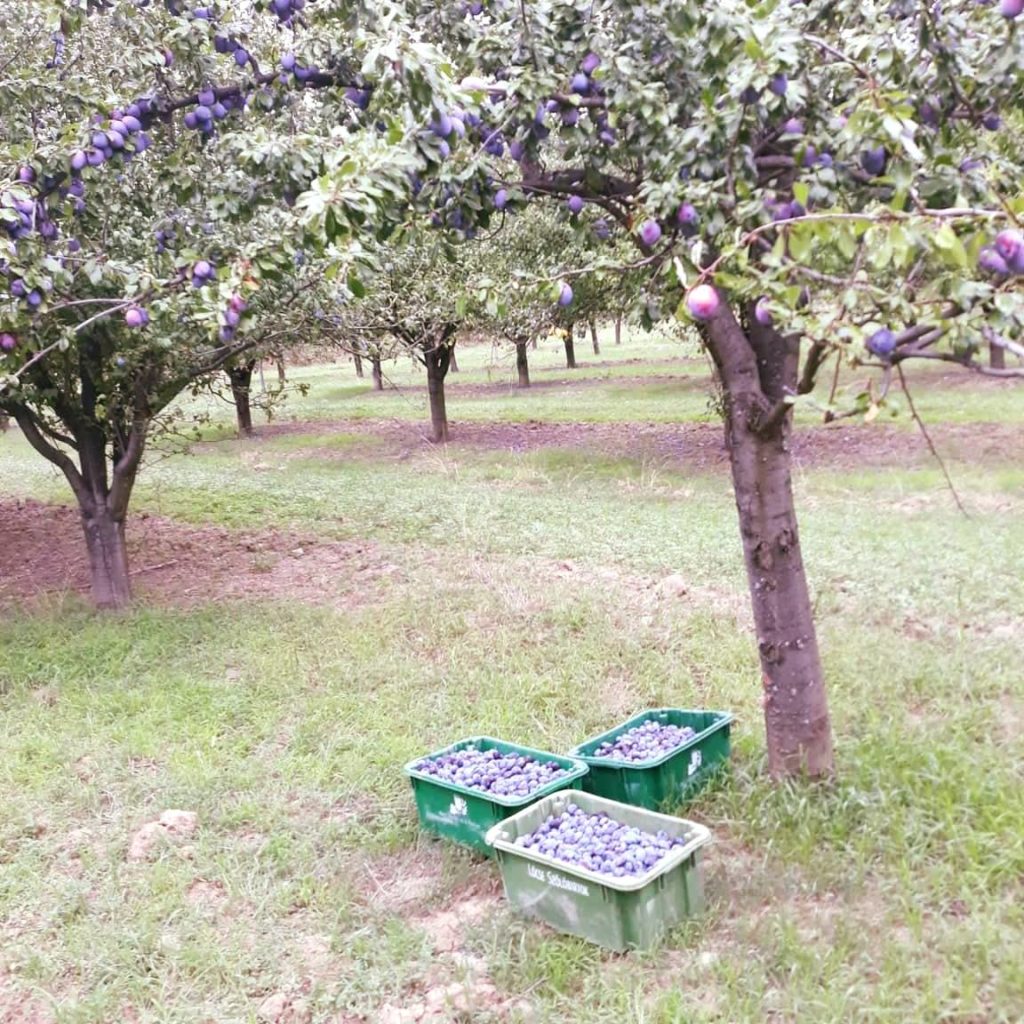
The tale of pálinka sunrise (and sunset)
‘Pálinka’ is an origin protected spirit made in Hungary, made of 100% fruit grown in Hungary. The grandfathers of some ours were proud of their mean way of fruit harvests: they used the healthy food for fresh consumption, or sold them, and the fallen, damaged fruit gathered from the ground was “still good enough for pálinka’. Thanks God there were some other grandfathers, who loved their own palate and their friends’ ones, therefore they refused to include rotten fruit for the distillation. They realized, that just like a bad cooking wine can spoil the food, rotten fruit will never make good pálinka.
Then around the turn of the millenium more and more quality distillaries appeared, some of them were managed by the sons of the “good grandfathers”, by experts who were aware of the importance of healthy food and careful manufacturing process. It was an exciting moment, and I am glad that somehow I was part of it. I used to be the editor of a wine magazine from 2004 to 2016, and meanwhile we had several pálinka related content, panel tasting – I even organized a national pálinka contest. I had the chance to learn from the most renowned experts of pálinka. And it was amazing to experience the increase of quality year by year.
Consumers realized that pálinka is not a “fence-tearing” drink – the expression was used for bad quality pálinka, because the person who drank it, lost his mind and destroyed senselessly. Fabulous products were released to the market, master distillers learnt how to capture the true essence of the fruit. We came across less and less faults at panel tasting, and even the “I-never-drink-spirit” people learnt to appreciate first class pálinka. Distilleries started to make new products, apart from the usual peach, plum and sour cherry other fruits appeared as base fruit like raspberry, dogberry and different grape varieties – thus not only grape pálinkas were available, but Merlot, Furmint or Irsai Olvér pálinkas as well. Pálinka was finally placed to its proper place in gastronomy – not in the role of an aperitif, to paralyze taste buds, but at the end of a meal as a digestif.
Connoisseurs admitted the fact that quality pálinka is a unique experience – and as a consequence of the valuable base fruits and the careful process it has the price.
Then a new pálinka legislation was introduced. In most countries distillation is strictly controlled, however in Hungary the goverment made distillation easier – everybody can make his own pálinka at home, as if pálinka was a basic human necessity, like water or bread. Thus since 2010 almost everyone has been able to make pálinka in case of being an adult, having some fruit and having the proper equipment. A household is allowed to make 86 litres (!) of pálinka per year (of 42% alcohol).
Then what happened is not a riddle. People spent less and less on quality pálinka, since there were and are so many self appointed pálinka masters, and having something for free is always tempting. Many of the pálinka manufactures had to give up. Some of them started to make gin – as they say it is much cheaper to make and it is also trendy. Pálinka has become a side product for distilleries and wineries, a nice-to-have in the portfolio.
We have less quality pálinkas available, the prices are high, but thanks to the devoted producers, keen pálinka lovers and educated spirit enthusiasts can find stunning products made of various fruits.
